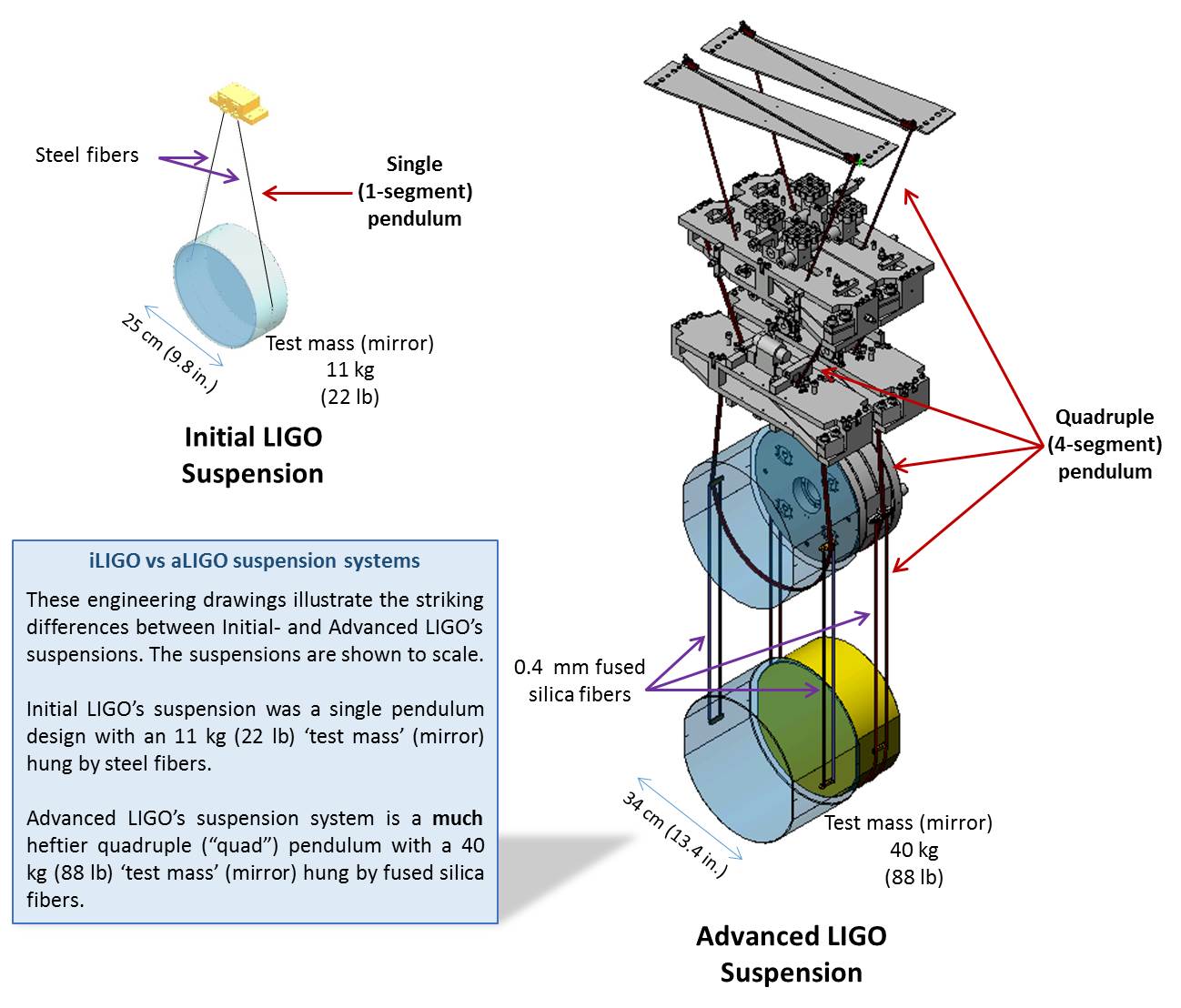Since LIGO is dealing with readings at nanometers, events such as vehicles driving nearby, and constant (but extremely minor) tremors of the earth can cause movement with the mirrors at nanometers.
Such tiny movements are extremely difficult to measure, but can easily cause errors when using such a small scale.
How does LIGO remove these factors, and take precautions to prevent false readings due to noise?
Answer
This is indeed a problem, which is dealt with using seismic isolation via Internal Seismic Isolation and Hydraulic External Pre-Isolators. The original LIGO isolation systems were passive - described here as shock absorbers - and included a single pendulum system, but the Advanced LIGO (aLIGO) upgrades added actuators that counteract vibrations in various components, as well as a quadruple pendulum system:
Hild (2011) talks about noise issues in general, including several graphs of noise severity at different frequencies:
It is clear that seismic noise is problematic mainly in lower frequencies, while quantum noise dominates at high frequencies. As such, other adjustments must be made (e.g. raising the power of the lasers, which aLIGO does, although it creates some radiation pressure that can be troublesome). However, these effects are not environmental, per se, as much as seismic activity is.
Related information is available in this presentation and this paper.
I'm not aware of what is done theoretically to compensate that; this is just how the apparatus reduces the impact of noise.


No comments:
Post a Comment